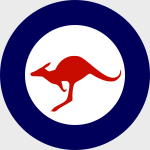Corgi AA34710 RAAF English Electric Canberra Mk.20 Light Bomber - No.2 Squadron, Phan Rang Air Base, South Vietnam, 1969 (1:72 Scale)
"If the whole of Indochina fell to the communists, Thailand would be gravely exposed. If Thailand were to fall, the road would be open to Malaya and Singapore. From the Malay Peninsula, the communists could dominate the northern approaches to Australia, and even cut our lifelines with Europe."
- H. R. Casey, Australian government minister, October 1954
 The English Electric Canberra was a first-generation jet-powered light bomber manufactured in large numbers through the 1950s. It proved to be highly adaptable, serving in such varied roles as tactical bomber, reconnaissance and even weather study. The type remained in service with the Royal Air Force until June 23rd, 2006, 57 years after its first flight.
The English Electric Canberra was a first-generation jet-powered light bomber manufactured in large numbers through the 1950s. It proved to be highly adaptable, serving in such varied roles as tactical bomber, reconnaissance and even weather study. The type remained in service with the Royal Air Force until June 23rd, 2006, 57 years after its first flight.
The Canberra had its origins in 1944 as a replacement for the unarmed high speed, high altitude de Havilland Mosquito bomber. Several British aircraft manufacturers submitted proposals. Among the companies shortlisted to proceed with development studies was English Electric, a well-established industrial manufacturer with very little aircraft experience. A desperate need for bombers arose during the early years of World War II, when English Electric began to build the Hampden under licence.
The new English Electric design team was headed by former Westland chief designer W. E. W. Petter. The aircraft was named Canberra after the capital of Australia by Sir George Nelson, chairman of English Electric, because Australia was the first export customer for the aircraft. In May 1945, a contract was signed, but with the post-war military reductions, the prototype did not fly until May 1949. It was a simple design, looking like a scaled-up Gloster Meteor with a shoulder wing. The fuselage was circular in cross section, tapered at both ends and, cockpit aside, entirely without protrusions; the line of the large, low aspect ratio wings was broken only by the tubular engine nacelles.
Although jet-powered and of all-metal construction, the Canberra design philosophy was very much in the Mosquito mould, i.e. provide room for a substantial bomb load, fit two of the most powerful engines available, and wrap it in the smallest, most aerodynamic package possible. Rather than devote space and weight to defensive armament - which historically could not overcome purpose-designed fighter aircraft - the Canberra was designed to fly fast and high enough to avoid air-to-air combat entirely.
The Canberra was designed for a crew of two, under a fighter-style canopy, but delays in the development of the intended automatic radar bombsight resulted in the addition of a bomb aimer's position in the nose. Wingspan and length were almost identical at just under 20 metres, maximum takeoff weight a little under 25 tonnes. Thrust was provided by a pair of 30 kN axial flow Rolls-Royce Avon turbojets.
Pictured here is a 1:72 scale replica of a RAAF English Electric Canberra Mk.20 light bomber that was attached to No.2 Squadron, then deployed to Phan Rang Air Base, South Vietnam, during 1969.
Sold Out!
Dimensions:
Wingspan: 11-inches
Length: 11-1/4-inches
Release Date: March 2024
Historical Account: "Magpies in Nam" - During the Vietnam War, eight Royal Australian Air Force Canberras from No.2 Squadron operated under a memorandum of understanding between the RAAF and the USAF, operating from Phan Rang Air Base in central South Vietnam, attached for the duration to the 35th Tactical Fighter Wing of the United States Air Force. These aircraft would provide crucial additional strike support for US units and were requested because of the aircraft's endurance, bombing accuracy and their ability to operate below the notoriously low cloud bases which often affected this region, if required.
The first RAAF Canberra arrived at Phan Rang on April 16th, 1967, having made the two hour transit flight from its base at Butterworth in Malaysia and the eight allocated aircraft would go on to serve with distinction during a four year period operating in support of the Vietnam War. With both RAAF air and ground crews operating at maximum efficiency, the Australian Canberras posted an impressive serviceability rate of 97%, but perhaps even more impressive than this, despite only flying 6% of the USAF 35th TFW's operational sorties during the conflict, they managed to inflict 16% of the damage inflicted.
By the time No.2 Squadron returned to Australia in 1971, they had become the final operational Canberra unit in the RAAF, but returned with a proud record of both serviceability and operational effectiveness throughout their deployment.


